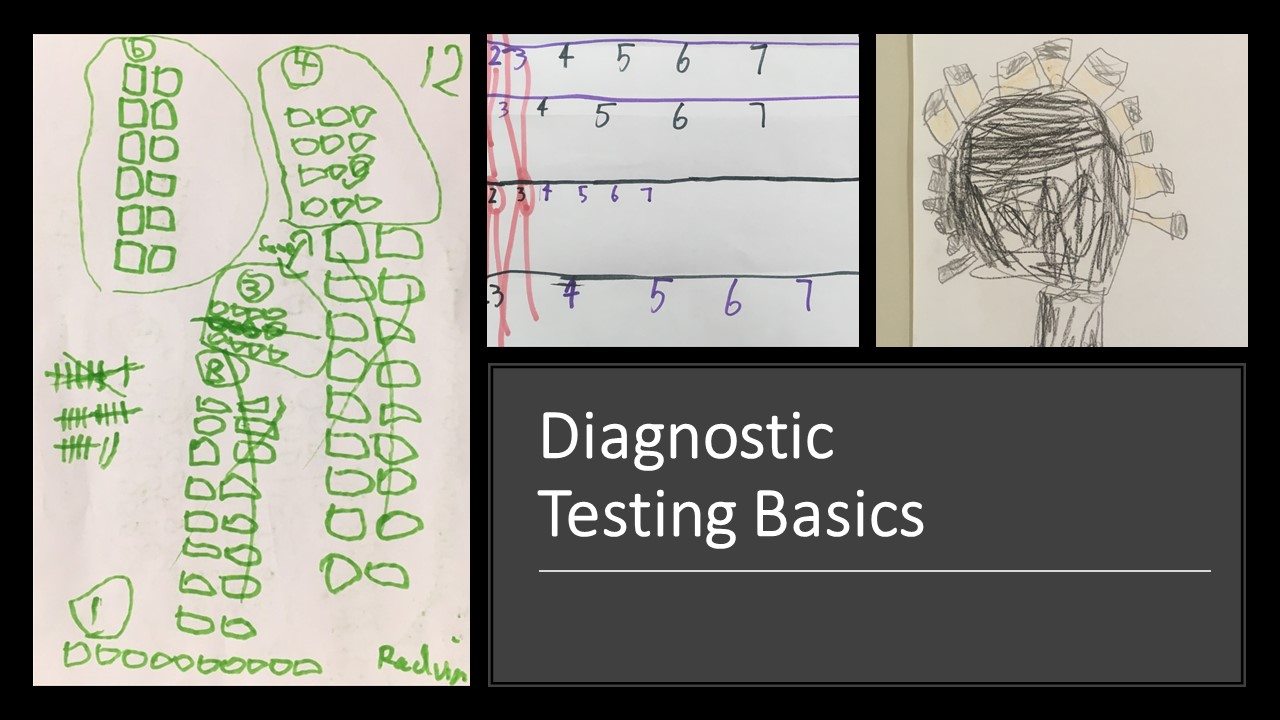
Formative assessment, developmental stages and starting the year well
The goal of formative assessment should always be to find out what each student NEEDS next, rather than focusing
Download this article here: Why I don’t teach two digit numbers before teen numbers
There has been a lot of advice to teachers recently that we should leave teaching of teen  numbers until after kids have learned about other two-digit numbers because the naming of teen numbers doesn’t fit the rest of the pattern.
numbers until after kids have learned about other two-digit numbers because the naming of teen numbers doesn’t fit the rest of the pattern.
I disagree. I find that while this advice might work if you are focusing simply on memorising digits, their names and counting without understanding, it fails to develop three important aspects that kids really need to have: Quantity, Partitioning and Relative Size. I find that developing these three concepts to 10 and then 20 before introducing two-digit numbers is much more effective. Here’s an explanation:
Quantity: This is when kids can make an amount in lots of different ways, move it around and understand that it is the same amount. The number does not change when the blocks move. Kids need to develop good “mental objects” for numbers – e.g., be able to picture five in their heads. This is similar to the concept of number conservation.
Partitioning: This is when kids can break a quantity into two amounts (or more) and work out what both parts are (e.g. eight can be broken into a three and a five part…). I find that when kids are really strong on partitioning to 10 and then to 20 it is really simple to teach two-digit numbers as these are effectively advanced partitioning. If a student can’t partition eight easily, how are they going to partition 37 into three tens and seven more?
Relative size: This is what most people actually mean when they talk about number sense. It’s an intuitive feel for “about how big” a number is compared to another e.g. 10 might be very big compared with one, but it is very small when compared with 100.
One of the wide-spread problems that I’ve noticed in kids coming through the teaching approach described above is that they don’t really understand Quantity. I tend to see it when I ask them to make a number like 23 from blocks or bundling sticks. Their initial answer appears to be ok, making two tens and three ones blocks, however when I put the ones blocks on the left of the tens blocks, which they think means that the number of blocks has changed to 32. Memorising without understanding can cause all sorts of difficulties, particularly when a student’s initial answer seems fine and we therefore don’t think to check more closely.
I have found that understanding number is far more important than being fluent. Memorising how to say/write/count a number is nowhere near as important as knowing how big it is and how it is related to its parts. Personally, I recommend the sequence below instead:
Level 1: Try to develop these by the end of Grade 1
Numbers 1-5: Quantity and Partitioning
Numbers to 10: Quantity and Partitioning
Numbers 10-20: Quantity and Partitioning
Numbers 1-10: Relative Size
Level 2: Try to develop these by the end of Grade 2
Numbers 0-100: Quantity, then Partitioning, then Relative Size
Level 3: Try to develop these by the end of Grade 3
Numbers 0-1000: Quantity, then Partitioning, then Relative Size
I find that teaching two-digit numbers with understanding is much easier when students can already conserve, partition and have a good understanding of the relative size of numbers to 20 before we start. These are the basic building-blocks for place value.
Want More?
Tierney

The goal of formative assessment should always be to find out what each student NEEDS next, rather than focusing
Recently I’ve been pondering findings from a major report into Australian schooling that kids who are struggling in maths by
by Tierney Kennedy Why is it that so much of education research goes seemingly unnoticed or ignored by teachers (Joram
As term 4 is upon us many teachers are struggling with how to get everything done. Realistically, now is the
You may have noticed that kids have a few issues with fractions… but it can be tricky to understand what

The successfulness of any intervention is largely dependent on matching the strategies selected to the needs of the students and

KENNEDY PRESS PTY LTD
FOR ALL ENQUIRIES, ORDERS AND TO ARRANGE PD:
© COPYRIGHT 2024 KENNEDY PRESS PTY LTD ALL RIGHTS RESERVED TERMS & CONDITIONS